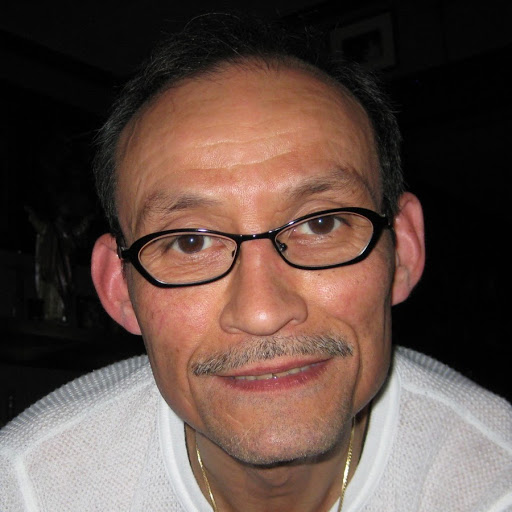Edward Andrew Blair
age ~64
from Boca Raton, FL
- Also known as:
-
- Edward A Blair
- Andrew E Blair
- Andy E Blair
- Ed A Blair
Edward Blair Phones & Addresses
- Boca Raton, FL
- Orlando, FL
- Chapel Hill, NC
- Dayton, OH
- Titusville, FL
- Gainesville, FL
- 1848 Coventry Rd, Dayton, OH 45420 • 937 974-3051
Work
-
Position:Service Occupations
Education
-
Degree:Graduate or professional degree
Name / Title
Company / Classification
Phones & Addresses
President
Blair Commercial Realty
Hospitality · Rl Este Agntsmgrs · Real Estate Agents
Hospitality · Rl Este Agntsmgrs · Real Estate Agents
101 Duryer Ct, Cary, NC 27511
919 469-3233
919 469-3233
Director, Vice President
Sheridan Oaks Town Houses Condominium Association, Inc
PO Box 122015, Fort Lauderdale, FL 33312
3952 Farragut St, Hollywood, FL 33021
3952 Farragut St, Hollywood, FL 33021
Manager, Principal
Southern Home Inspection LLC
Business Services · Business Services, Nec, Nsk
Business Services · Business Services, Nec, Nsk
2269 S University Dr, Fort Lauderdale, FL 33324
Director
MARGARETTEN & COMPANY, INC
THE BOXANNA CANNING COMPANY
Lebanon, OH
President, Vice President
Pankow, Blair & Associates, Inc
9800 W Sample Rd, Pompano Beach, FL 33065
Treasurer
Concept Wood Inc
Furniture
Furniture
PO Box 27, Eustis, FL 32727
MM
Odyssey Power Development, LLC
Us Patents
-
Computer-Implemented Systems And Methods For Large Scale Automatic Forecast Combinations
view source -
US Patent:20130024167, Jan 24, 2013
-
Filed:Jul 22, 2011
-
Appl. No.:13/189131
-
Inventors:Edward Tilden Blair - Cary NC, US
Michael J. Leonard - Cary NC, US
David Bruce Elsheimer - Clayton NC, US
Jerzy Michal Brzezicki - Cary NC, US
Kannukuzhiyil Kurien Kurien - Pune, IN
Michael Ryan Chipley - Raleigh NC, US
Dinesh P. Apte - Pune, IN
Ming-Chun Chang - Cary NC, US -
International Classification:G06F 17/10
-
US Classification:703 2
-
Abstract:Systems and methods are provided for evaluating a physical process with respect to one or more attributes of the physical process by combining forecasts for the one or more physical process attributes, where data for evaluating the physical process is generated over time. A forecast model selection graph is accessed, the forecast model selection graph comprising a hierarchy of nodes arranged in parent-child relationships. A plurality of model forecast nodes are resolved, where resolving a model forecast node includes generating a node forecast for the one or more physical process attributes. A combination node is processed, where a combination node transforms a plurality of node forecasts at child nodes of the combination node into a combined forecast. A selection node is processed, where a selection node chooses a node forecast from among child nodes of the selection node based on a selection criteria.
-
Computer-Implemented Systems And Methods For Testing Large Scale Automatic Forecast Combinations
view source -
US Patent:20130024173, Jan 24, 2013
-
Filed:Apr 5, 2012
-
Appl. No.:13/440045
-
Inventors:Jerzy Michal Brzezicki - Cary NC, US
Dinesh P. Apte - Pune, IN
Michael J. Leonard - Cary NC, US
Michael Ryan Chipley - Raleigh NC, US
Sagar Arun Mainkar - Pune, IN
Edward Tilden Blair - Cary NC, US -
International Classification:G06G 7/48
-
US Classification:703 6
-
Abstract:Systems and methods are provided for evaluating performance of forecasting models. A plurality of forecasting models may be generated using a set of in-sample data. Two or more forecasting models from the plurality of forecasting models may be selected for use in generating a combined forecast. An ex-ante combined forecast may be generated for an out-of-sample period using the selected two or more forecasting models. The ex-ante combined forecast may then be compared with a set of actual out-of-sample data to evaluate performance of the combined forecast.
-
Computer-Implemented Systems And Methods For Time Series Exploration
view source -
US Patent:20140019088, Jan 16, 2014
-
Filed:Jul 13, 2012
-
Appl. No.:13/548307
-
Inventors:Michael James LEONARD - Cary NC, US
Edward Tilden BLAIR - Cary NC, US
Jerzy Michal BRZEZICKI - Cary NC, US
Udo V. SGLAVO - Raleigh NC, US
Ranbir Singh TOMAR - Pune, IN
Kannukuzhiyil Kurien KURIEN - Pune, IN
Sujatha POTHIREDDY - Apex NC, US
Rajib NATH - Pune, IN
Vilochan Suresh MULEY - Pune, IN -
International Classification:G06F 15/00
G06F 17/18
G04F 10/00 -
US Classification:702178
-
Abstract:Systems and methods are provided for analyzing unstructured time stamped data of a physical process in order to generate structured hierarchical data for a hierarchical time series analysis application. A plurality of time series analysis functions are selected from a functions repository. Distributions of time stamped unstructured data are analyzed to identify a plurality of potential hierarchical structures for the unstructured data with respect to the selected time series analysis functions. Different recommendations for the potential hierarchical structures for each of the selected time series analysis functions are provided, where the selected time series analysis functions affect what types of recommendations are to be provided, and the unstructured data is structured into a hierarchical structure according to one or more of the recommended hierarchical structures, where the structured hierarchical data is provided to an application for analysis using one or more of the selected time series analysis functions.
-
Computer-Implemented Systems And Methods For Efficient Structuring Of Time Series Data
view source -
US Patent:20140019448, Jan 16, 2014
-
Filed:Jul 13, 2012
-
Appl. No.:13/548282
-
Inventors:Michael James Leonard - Cary NC, US
Keith Eugene Crowe - Cary NC, US
Stacey M. Christian - Cary NC, US
Jennifer Leigh Sloan Beeman - Cary NC, US
David Bruce Elsheimer - Clayton NC, US
Edward Tilden Blair - Cary NC, US -
International Classification:G06F 17/30
-
US Classification:707736, 707E17044
-
Abstract:Systems and methods are provided for analyzing through one-pass of unstructured time stamped data of a physical process. A distribution of time-stamped unstructured data is analyzed to identify a plurality of potential hierarchical structures for the unstructured data. A hierarchical analysis of the potential hierarchical structures is performed to determine an optimal frequency and a data sufficiency metric for the potential hierarchical structures. One of the potential hierarchical structures is selected as a selected hierarchical structure based on the data sufficiency metrics. The unstructured data is structured according to the selected hierarchical structure and the optimal frequency associated with the selected hierarchical structure, where said structuring of the unstructured data is performed via a single pass though the unstructured data. The identified statistical analysis of the physical process is performed using the structured data.
-
Scalable Cloud-Based Time Series Analysis
view source -
US Patent:20200110602, Apr 9, 2020
-
Filed:Nov 27, 2019
-
Appl. No.:16/697680
-
Inventors:- Cary NC, US
Thiago Santos Quirino - Morrisville NC, US
Edward Tilden Blair - Cary NC, US
Jennifer Leigh Sloan Beeman - Cary NC, US
David Bruce Elsheimer - Clayton NC, US
Javier Delgado - Cary NC, US -
International Classification:G06F 8/76
G06F 8/60
G06F 9/50
G06F 16/23 -
Abstract:In some examples, computing devices can partition timestamped data into groups. The computing devices can then distribute the timestamped data based on the groups. The computing devices can also obtain copies of a script configured to process the timestamped data, such that each computing device receives a copy of the script. The computing devices can determine one or more code segments associated with the groups based on content of the script. The one or more code segments can be in one or more programming languages that are different than a programming language of the script. The computing devices can then run the copies of the script to process the timestamped data within the groups. This may involve interacting with one or more job servers configured to run the one or more code segments associated with the groups.
-
Scalable Cloud-Based Time Series Analysis
view source -
US Patent:20190286440, Sep 19, 2019
-
Filed:May 22, 2019
-
Appl. No.:16/419680
-
Inventors:- Cary NC, US
Thiago Santos Quirino - Morrisville NC, US
Edward Tilden Blair - Cary NC, US
Jennifer Leigh Sloan Beeman - Cary NC, US
David Bruce Elsheimer - Clayton NC, US
Javier Delgado - Cary NC, US -
Assignee:SAS Institute Inc. - Cary NC
-
International Classification:G06F 8/76
G06F 16/23
G06F 9/50
G06F 8/60 -
Abstract:In some examples, computing devices can partition timestamped data into groups. The computing devices can then distribute the timestamped data based on the groups. The computing devices can also obtain copies of a script configured to process the timestamped data, such that each computing device receives a copy of the script. The computing devices can determine one or more code segments associated with the groups based on content of the script. The one or more code segments can be in one or more programming languages that are different than a programming language of the script. The computing devices can then run the copies of the script to process the timestamped data within the groups. This may involve interacting with one or more job servers configured to run the one or more code segments associated with the groups.
-
Scalable Cloud-Based Time Series Analysis
view source -
US Patent:20190146849, May 16, 2019
-
Filed:Nov 16, 2018
-
Appl. No.:16/193661
-
Inventors:- Cary NC, US
Thiago Santos Quirino - Morrisville NC, US
Edward Tilden Blair - Cary NC, US
Jennifer Leigh Sloan Beeman - Cary NC, US
David Bruce Elsheimer - Clayton NC, US -
Assignee:SAS Institute Inc. - Cary NC
-
International Classification:G06F 9/50
G06F 8/41 -
Abstract:Timestamped data can be read in parallel by multiple grid-computing devices. The timestamped data, which can be partitioned into groups based on time series criteria, can be deterministically distributed across the multiple grid-computing devices based on the time series criteria. Each grid-computing device can sort and accumulate the timestamped data into a time series for each group it receives and then process the resultant time series based on a previously distributed script, which can be compiled at each grid-computing device, to generate output data. The grid-computing devices can write their output data in parallel. As a result, vast amounts of timestamped data can be easily analyzed across an easily expandable number of grid-computing devices with reduced computational expense.
-
Computer-Implemented Systems And Methods For Time Series Exploration
view source -
US Patent:20180157619, Jun 7, 2018
-
Filed:Feb 6, 2018
-
Appl. No.:15/890013
-
Inventors:- Cary NC, US
Edward Tilden Blair - Cary NC, US
Jerzy Michal Brzezicki - Cary NC, US
Udo V. Sglavo - Raleigh NC, US
Sujatha Pothireddy - Apex NC, US -
Assignee:SAS Institute Inc. - Cary NC
-
International Classification:G06F 17/10
G06Q 30/02
G06F 17/18
G06F 17/30
G06Q 10/04 -
Abstract:Systems and methods are provided for analyzing unstructured time stamped data. A distribution of time-stamped data is analyzed to identify a plurality of potential time series data hierarchies for structuring the data. An analysis of a potential time series data hierarchy may be performed. The analysis of the potential time series data hierarchies may include determining an optimal time series frequency and a data sufficiency metric for each of the potential time series data hierarchies. One of the potential time series data hierarchies may be selected based on a comparison of the data sufficiency metrics. Multiple time series may be derived in a single-read pass according to the selected time series data hierarchy. A time series forecast corresponding to at least one of the derived time series may be generated.
Isbn (Books And Publications)
-
The Illustrated Bible Handbook
view source -
Author:Edward Payson Blair
-
ISBN #:0687186803
-
Manual Biblico De Abingdon
view source -
Author:Edward Payson Blair
-
ISBN #:0687231701
-
Abingdon Bible Handbook
view source -
Author:Edward P. Blair
-
ISBN #:0687001692
-
1 And 2 Corinthians, Galatians, Ephesians
view source -
Author:Edward P. Blair
-
ISBN #:0687062349
-
Genetically Engineered Viruses: Development And Applications
view source -
Author:Edward D. Blair
-
ISBN #:0387916113
-
Marketing Research: A Problem-Solving Approach
view source -
Author:Edward Blair
-
ISBN #:0079136702
-
Marketing In Action: A Reader
view source -
Author:Edward Blair
-
ISBN #:0135601371
-
Leadville Colorado'S Magic City
view source -
Author:Edward Blair
-
ISBN #:0871085445
License Records
Edward Andrew Blair
Address:
9065 Flynn Cir, Boca Raton, FL
4200 Congress Ave, Lake Worth, FL
Phone:
561 482-6411
License #:
6805 - Active
Category:
Health Care
Issued Date:
Sep 11, 2003
Effective Date:
Sep 11, 2003
Expiration Date:
May 31, 2018
Type:
Psychologist
Resumes

Edward Blair
view sourceWork:
First&Ten

Edward Blair
view source
Edward Blair
view source
Edward Blair
view source
Edward Blair
view source
Edward Blair
view sourceLocation:
United States
Medicine Doctors

Edward B. Blair
view sourceSpecialties:
Internal Medicine
Work:
Saint Anthonys Physician Group
2 Saint Anthonys Way STE 205, Alton, IL 62002
618 465-8019 (phone), 618 463-5004 (fax)
2 Saint Anthonys Way STE 205, Alton, IL 62002
618 465-8019 (phone), 618 463-5004 (fax)
Education:
Medical School
Saint Louis University School of Medicine
Graduated: 1975
Saint Louis University School of Medicine
Graduated: 1975
Procedures:
Allergen Immunotherapy
Electrocardiogram (EKG or ECG)
Pulmonary Function Tests
Vaccine Administration
Electrocardiogram (EKG or ECG)
Pulmonary Function Tests
Vaccine Administration
Conditions:
Acne
Acute Bronchitis
Acute Conjunctivitis
Acute Pharyngitis
Acute Sinusitis
Acute Bronchitis
Acute Conjunctivitis
Acute Pharyngitis
Acute Sinusitis
Languages:
Chinese
English
English
Description:
Dr. Blair graduated from the Saint Louis University School of Medicine in 1975. He works in Alton, IL and specializes in Internal Medicine. Dr. Blair is affiliated with Saint Anthonys Health Center.
Youtube

Edward Blair
view source
Edward Blair
view source
Robert Edward Blair
view source
Edward Blair
view source
Edward Blair
view source
Edward Blair
view source
Edward Blair
view source
Edward Ric Blair
view sourceClassmates

Edward Blair
view sourceSchools:
Palouse High School Palouse WA 1936-1940
Community:
Nick Proctor, Ann Minks, Bill Dawdy, Barbara Dial

Edward Blair
view sourceSchools:
South Laurel High School London KY 1982-1986
Community:
Doug Boggs, Ludale Marie, Phyllis Fields

Edward Blair
view sourceSchools:
Winslow Township Intermediate School 6 Sicklerville NJ 1993-1995
Community:
Rocky Devivo, Nicole Conti, Robert Surran

Edward Blair
view sourceSchools:
Saint Teresa Regional School Runnemede NJ 1956-1964
Community:
Norma Rainey, John Walder

Edward Blair (Edward Bla...
view sourceSchools:
Lenoir High School Lenoir NC 1960-1964
Community:
Wallace Wally, Harry Setser, Mary Sisk, Kathy Wilson, Mike Nelson

Edward J Blair
view sourceSchools:
Augustine J. Belmonte Junior High School Saugus MA 1976-1978
Community:
Rosemarie Digregorio, Laurene Murphy, Kerry Barry, Kelly Stone, Kathleen Morgan, Regina Hanlon, Mary Mullen, Anna Jones, Joyce Mullen, Edward Laplante

Edward Blair
view sourceSchools:
Lilbourn High School Lilbourn MO 1962-1966
Community:
Harold Allred, Jessie Newson, Mary Littrell

edward blair, JP Stevens ...
view sourceMyspace
Flickr
Plaxo

Edward Blair
view sourceHarrisburg
Googleplus

Edward Blair

Edward Blair

Edward Blair

Edward Blair

Edward Blair

Edward Blair
Work:
N

Edward Blair

Edward Blair
Get Report for Edward Andrew Blair from Boca Raton, FL, age ~64
















